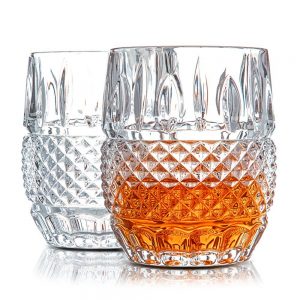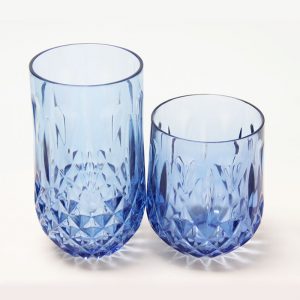Understanding the different types of glass can help you make informed decisions when choosing glassware or considering its various applications. Here are some key differences between common types of glass:
1. Soda-Lime Glass:
- Soda-lime glass is the most common type of glass and is used for everyday glassware, windows, and containers.
- It’s made from sand, soda ash, and limestone, and is known for its clarity and durability.
- Soda-lime glass is not as resistant to thermal shock as some other types of glass.
2. Borosilicate Glass:
- Borosilicate glass is known for its high resistance to thermal shock and temperature changes.
- It’s often used in laboratory glassware, cookware, and specialty glass products.
- Borosilicate glass contains boron oxide, which gives it its unique properties.
3. Crystal Glass:
- Crystal glass contains a higher percentage of lead oxide or other metal oxides, giving it enhanced clarity, brilliance, and weight.
- It’s often used for fine glassware like wine glasses, decanters, and decorative items.
- Crystal glass can produce a distinct ringing sound when tapped.
4. Tempered Glass:
- Tempered glass is treated with heat or chemicals to increase its strength and resistance to breakage.
- It’s used in applications requiring safety, such as car windows, shower doors, and some glassware.
- When tempered glass breaks, it shatters into small, relatively harmless pieces.
5. Fused Glass:
- Fused glass is created by melting different pieces of glass together in a kiln, resulting in unique patterns and textures.
- It’s often used in art and decorative pieces, such as jewelry, sculptures, and glass panels.
6. Stained Glass:
- Stained glass is colored glass that is used to create intricate patterns and designs.
- It’s commonly used in windows, lampshades, and artistic installations like stained glass windows in churches.
7. Float Glass:
- Float glass is manufactured by floating molten glass on a bed of molten metal, resulting in a smooth and flat surface.
- It’s used in windows, mirrors, and architectural applications.
8. Safety Glass:
- Safety glass includes laminated glass and tempered glass, both of which are designed to reduce the risk of injury upon breakage.
- Laminated glass has layers of plastic between glass sheets, while tempered glass is treated to break into small, safer fragments.
9. Art Glass:
- Art glass encompasses various techniques, including blown glass, fused glass, and lampworking, to create unique and artistic pieces.
Understanding these different types of glass can help you choose the right glassware for your needs and appreciate the diverse range of applications and aesthetics that glass offers.
















